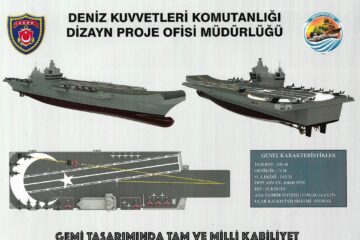Following the conclusion of Exercise Strike Warrior, the UK’s two new Elizabeth-class aircraft carriers HMS Queen Elizabeth and HMS Prince of Wales sailed together at sea for the first time as the former returned to Portsmouth.
With two 65,000 tonne carriers in operational service, Britain has a continuous carrier strike capability, with one vessel always ready to respond to global events at short notice.
“Having previously commanded both HMS Queen Elizabeth and HMS Prince of Wales, it was hugely exciting to be present as the two met at sea for the first time. I know that sense of pride and accomplishment is shared by thousands of others, military and civilian, who have contributed to the Royal Navy’s carrier renaissance over the past decade or more. The strategic significance is profound. Building one aircraft carrier is a sign of national ambition. But building two – and operating them simultaneously – is a sign of serious national intent. It means Britain has a continuous carrier strike capability, with one vessel always ready to respond to global events at short notice. Few other navies can do that. Britain is back in the front rank of maritime powers.”
Commodore Steve Moorhouse, Commander UK Carrier Strike Group
Strike Warrior saw the Carrier Strike Group pitted against warships from NATO’s Standing Maritime Group 1 to prove it can undertake high-intensity operations in response to a broad range of crisis and conflict situations. Activities included live missile firings at sea, training with NATO, mine counter measures operations and submarine exercises.

HMS Queen Elizabeth is now about to set sail as the flagship of Carrier Strike Group 21 (CSG21). As well as operating as an aircraft carrier, one of the key capabilities of the ship will be able to act as a key focus of command for the CSG21 multi-nation task groups and inter-navy training that will be such a critical feature of 2021 operations.






